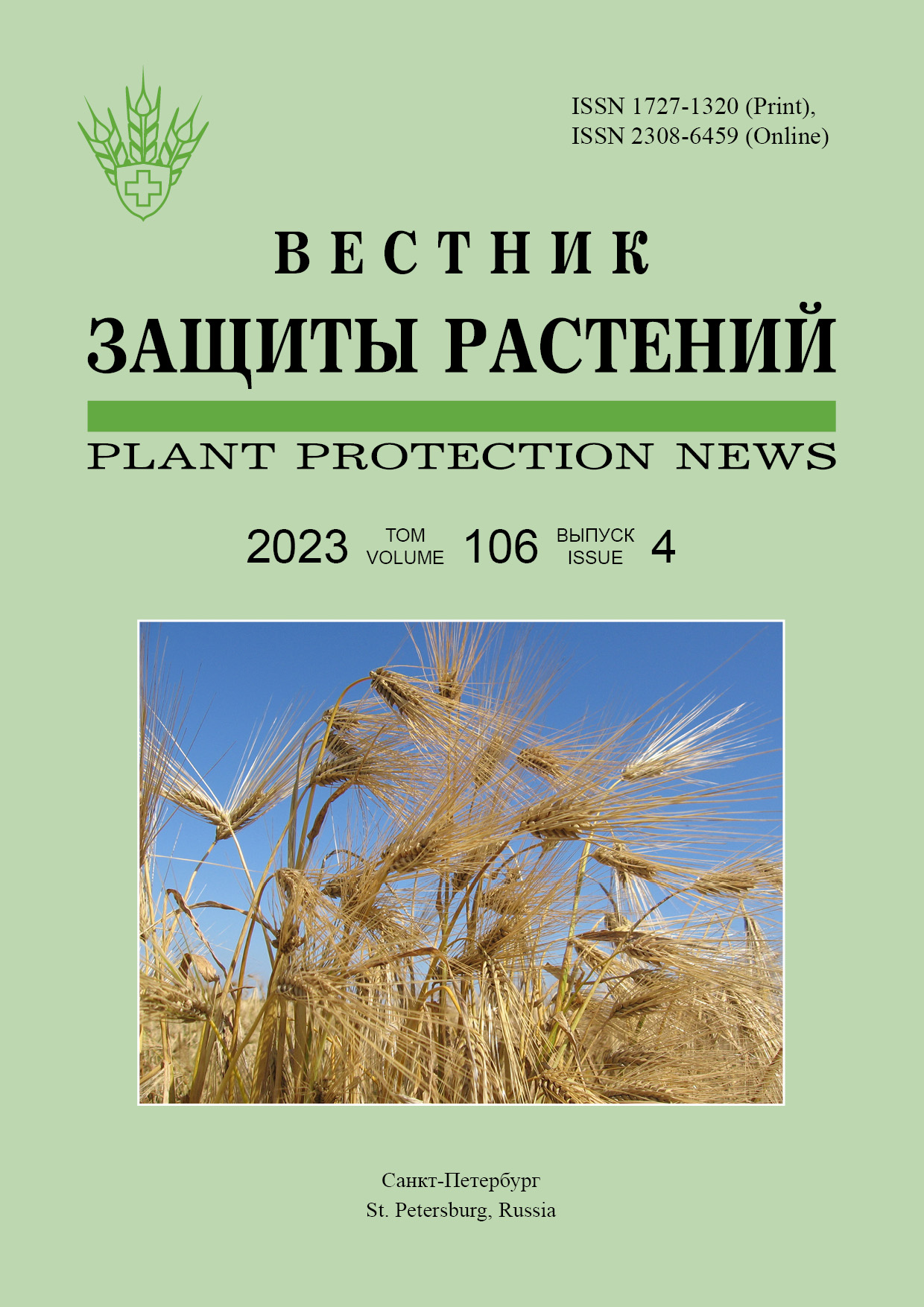The toxic effect of α-tomatine on the 28-spotted potato ladybeetle Henosepilachna vigintioctomaculata (Coleoptera: Coccinellidae)
Keywords:
potato ladybird beetle, tomatine, resistance, potato, Primorsky krayAbstract
Glycoalcoloids of plant origin serve as teratogens, causing various teratoses and abnormalities of insect development. Our previous studies discovered dependence of developmental defects in the 28-spotted potato ladybeetle Henosepilachna vigintioctomaculata upon its feeding on certain potato varieties. The present study was undertaken to study the toxic effect of α-tomatine against the 28-spotted potato ladybeetle. Tomatine was chosen as a model glycoalkaloid. Potato leaves were treated with tomatine solutions in different concentrations. Control leaves were treated with distilled water. Ten first-instar larvae were placed in a Petri dish with treated leaves. The effect of tomatine on H. vigintioctomaculata was assessed by appearance of morphological abnormalities in the adults. As a result, a confident direct correlation between the tomatine concentration and the developmental defect frequency was found. Brachelytry and cystelytry were the main anomaly types. When the stock 6 % solution was used, insect mortality was the highest, reaching 70 %. The highest level of teratoses (60 %) among survived insects and relatively high mortality (27 %) were observed in insects treated with 0.6 % solutions of tomatine. As the tomatine concentration decreased, so did the mortality level and developmental defect frequency. At 0.06 % solution treatement, mortality was 17 % and quote of teratoses – 47 %, at 0.006 % – 16.6 % and 6.8 %; at 0.0006 % – 3.3 % and 3.4 %, respectively. Thus, tomatine can be used as an insecticidal compound for potato cultivation.



